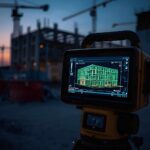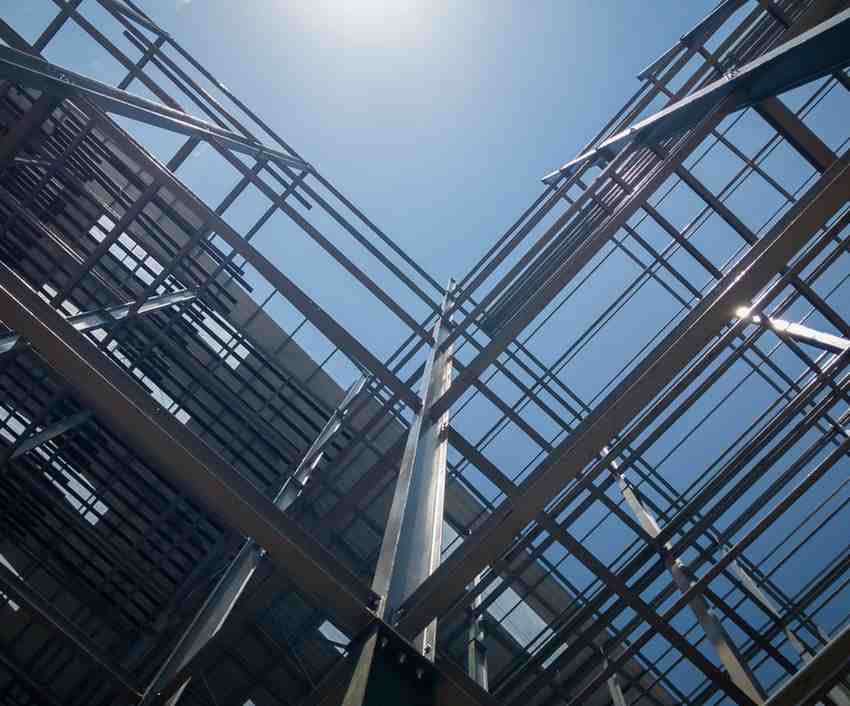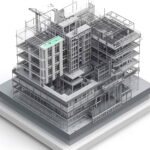

Introduction
Construction projects are becoming more complex, involving various stakeholders, disciplines, and large amounts of design data. With many moving parts, conflicts between different systems, such as structural, mechanical, electrical, and plumbing, are almost unavoidable. This is where Building Information Modeling (BIM) clash detection becomes essential.
BIM clash detection helps project teams find and fix conflicts during the design stage, before construction begins. It helps you to saves both time and money. In this guide, we will explore what BIM clash detection is, why it is matter, the different types of clashes, the process, it’s benefits, best practices, and how tools can enhance project delivery.
What is BIM Clash Detection?
BIM clash detection is the process of using BIM software to spot conflicts in a digital 3D model of a construction project. These clashes occur when different design elements, like HVAC ducts, electrical conduits, or structural beams, overlap, interfere with each other, or don’t leave enough clearance space.
Identifying these issues in the design phase, instead of during construction, helps avoid costly and time-consuming fixes.
Types of Clashes in BIM
Not all clashes are same. They fall into different categories:
1. Hard Clashes
* When two physical elements occupy the same space, such as a duct running through a beam.
* Easy to identify and usually the most urgent to fix.
2. Soft Clashes (Clearance Issues)
* When elements don’t intersect but don’t allow needed clearance for safe installation or maintenance.
* Example: A pipe positioned too close to a wall, leaving no room for repairs.
3. Workflow or Semantic Clashes
* These occur due to scheduling or data mismatches.
* Example: A wall set for completion before the electrical wiring installation.
By identifying all three types, BIM clash detection improves spatial coordination and workflow efficiency.
Why Clash Detection is Critical for Construction Projects
1. Cost and Time Savings
Fixing a clash in the digital model is much cheaper than addressing it during construction. Early detection reduces unnecessary rework, cuts down on material waste, and keeps projects on track.
2. Better Collaboration Across Teams
BIM clash detection brings together architects, engineers, contractors, and consultants. Working on a shared model ensures everyone is on the same page, reducing miscommunication and design silos.
3. Improved Safety and Compliance
Clearance issues and design errors can create safety hazards and lead to failing to meet building codes. Clash detection makes sure designs comply with regulations and improve worker safety.
4. Increased Project Predictability
When conflicts are resolved early, project managers gain more control over schedules, budgets, and outcomes. This approach leads to fewer surprises during construction and builds greater confidence among stakeholders.
5. Optimized Scheduling
Workflow clashes can disrupt timelines. BIM clash detection integrates with project schedules (4D BIM) to optimize sequencing and avoid delays.
How BIM Clash Detection Works: Step-by-Step
Clash detection generally follows a structured workflow:
1. Model Creation
* Each discipline, such as structural, architectural, and MEP, develops a 3D model.
2. Model Integration
* These models are combined into a single federated BIM model.
3. Clash Detection Run
* Using BIM tools like Navisworks, Revit, or Solibri, clashes are automatically found.
4. Clash Report Generation
* The software creates a list of detected clashes, including screenshots, locations, and severity levels.
5. Issue Resolution
* Design teams work together to resolve clashes and update their models.
6. Validation and Coordination Meetings
* The updated model is reviewed to ensure clashes are addressed before proceeding.
This process helps tackle design conflicts long before construction starts.
Incorporating Clash Detection Into Your Workflow
Clash detection isn’t a one-time task—it’s an ongoing part of BIM coordination. Here’s how to integrate it into your workflow:
* Start Early: Run clash detection during early design to catch issues before they grow.
* Set Clear Tolerances: Define rules to avoid flagging irrelevant or minor clashes.
* Prioritize Issues: Tackle high-risk clashes first, such as structural versus MEP, before addressing smaller ones.
* Coordinate Regularly: Hold clash resolution meetings with all stakeholders to review progress.
* Use Cloud Collaboration: Leverage BIM cloud platforms for real-time updates and transparency among teams.
Benefits of BIM Clash Detection
The benefits of using clash detection in BIM are clear:
* Reduced Rework: Identifying errors before construction cuts down on costly changes on site.
* Stronger Collaboration: Promotes teamwork among architects, engineers, and contractors.
* Faster Project Delivery: Improved coordination leads to fewer delays.
* Higher ROI: Every clash resolved during design saves money during construction.
* Better Safety: Ensures designs meet clearance, accessibility, and compliance standards.
Collaborate with ASE Structure Design for Easy BIM Support
At ASE Structure Design, we offer full BIM solutions to streamline design coordination and minimize project risks. Our clash detection services ensure that every project is free of costly conflicts before construction begins.
By partnering with us, you gain:
* Expert help in clash detection and model coordination.
* Customized BIM workflows for wireless infrastructure, fiber planning, and structural design projects.
* A commitment to helping clients save costs, reduce delays, and improve quality outcomes.
With over twenty years of engineering design experience, ASE Structure Design is your reliable partner for delivering smarter, conflict-free projects.
Conclusion
BIM clash detection is not just about avoiding conflicts; it’s about achieving project success. From cost savings and better safety to improved collaboration and predictable outcomes, clash detection supports modern construction workflows.
By adopting BIM clash detection and working with experts like ASE Structure Design, you can ensure smoother project delivery, increased efficiency, and higher client satisfaction.
Latest News



